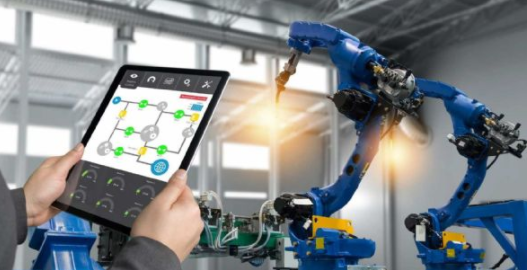Industrial analyst firm Cambashi has just completed research on industrial Internet of Things (IIoT) applications, with the goal of determining market structure and direction through interviews with leading vendors and desk research.
According to reports, Cambashi pointed out in the research report that many of the technologies that make up IIoT are actually fully established. Most people think that IIoT is composed of six levels:

This can cover everything from vehicles to components. Most of the IoT devices have so far been dominated by personal devices such as fitness monitoring and home appliance control. But recent surveys show that industrial applications of IoT are growing rapidly.
Second, electronic devices, software, sensors and actuatorsCurrently, almost every consumer and industrial product equipped with a battery or switch contains software-controlled electronic devices. The recent trend is that component suppliers who provide digital metadata describing their components may have an advantage at this stage because metadata can be imported into systems engineering and other tools to assist the expert team in building, simulating, and planning development projects.
Many control software development teams develop software primarily for stand-alone machines in closed environments. And taking advantage of the new connectivity can be quite disruptive for these teams.
Third, connectivityThe means by which the product communicates with the back-end system, from proprietary to standards-based methods. Networked devices can be interconnected early, but proprietary custom systems have traditionally been used in the past. Today, cloud computing provides a more convenient and cost-effective way to connect to other systems.
Connectivity also has two major innovations:
The first is edge computing, such as a server located near a smart product or factory that acts as a data collection point. Since a large amount of data can be collected from billions of devices in the field, as much data processing and filtering as possible can be performed near the device or sensor, only a small number of transmissions to the cloud are required, reducing the data processing burden.
This is followed by evolving networking standards. The Industrial Internet Consortium (IIC) Industrial IoT Connection Framework lists 10 core standard guidelines, including grammatical interoperability and ready-to-use software development kits.
The IIC also evaluated four online standards: DDS; Web Services; OPC-UA and oneM2M. Each of these standards is evolving to provide specific benefits in the implementation of IIoT. For example, DDS is an emerging standard whose main feature is the absence of a message concept, where software applications talk to the data bus data bus to provide a more efficient solution when data has multiple destinations.
Fourth, product access and data routingAlmost every networked product has more than one organization interested in reading its data and sending commands to it. Product access and data routing layers control and manage who has access to what. For example, machine builders and third-party service companies offer machine monitoring, optimization, and predictive maintenance.
They can see where the data is, what settings can be changed, if there is a change who is responsible for recording and matching it with other machine usage records, and whether the machine owner, local operator or field service technician can control this Access, etc. are all issues to consider.
Companies supplying internal motor motors can provide automated motor monitoring services. These data streams form a complex network, but it is worth noting that product lifecycle management (PLM) systems have been handling access control for many years to manage such data flows between design data.
Five, product-specific softwareThis is at the heart of many of the new features of intelligent networking products. Observing and analyzing the status of a group of connected devices and developing new features for operations or service plans will be provided by the software at this layer. This layer also has the important role of being properly connected and integrated with other enterprise applications.
For example, updates to embedded software will only be sent to customers using a valid subscription, and customer relationship management (CRM) or sales order processing systems may include this information.
Sixth, other enterprise applicationsMRO management (Maintenance, Repair and OperaTIons) may be the focus of smart networking product plans, perhaps from fault repair to conversion based on usage or predictive maintenance. But many MRO issues remain the same, including error handling, configuration or software availability fixes; scheduling technicians.
Therefore, the focus of using tools may be booking and setting up, scheduling technicians and components for maintenance and troubleshooting. The good integration of these applications is serviced, enabling companies to supplement their products with additional services.
Cambashi believes that IIoT will undoubtedly continue to be disruptive and can change the traditional business and software implementation model, and the main elements shown in the above six-layer model are in place. However, there is still much room for innovation in the application of IIoT, the development and manufacture of intelligent networking equipment, and the functions of tools and components used in all six levels of IoT.